Studies show that large teams with active managers are likely to be more engaged.
Team engagement in the Covid Era
COVID-19 has changed the way we work. Managing today’s employees becomes more complex as companies shift towards hybrid or remote work. While organizations face challenges keeping their employees engaged and connected, employees also struggle to build healthy workplace relationships. Organizations today are increasingly working in teams to improve productivity and increase workplace efficiency. However, assigning employees to projects rather than individual work can significantly increase an employees’ workload.
Employee engagement research is extensive but mostly examined on the individual level. Recently, scholars have proposed that engagement is not only an individual phenomenon but also occurs in teams. We found that active leaders who are responsive to employees’ feedback lead teams with significantly higher “employee Net Promoter Score” or eNPS, which could lead to higher team engagement and happiness. However, a direct relationship between manager activeness and team engagement was not examined. This study explores the relationship between manager activity and team engagement levels while taking into account the impact of team size. (Here's a different study on the relationship between team size and employee happiness)
Study & Results
Our Hypothesis: “Teams with active managers are more likely to be engaged(have higher engagement scores).”
Our Study
We collected data across four companies with 103 teams (2 to 32 members per team) with a total of 727 respondents to study a manager’s impact on team engagement. At Happily.ai, we propose that engagement is best understood by analyzing behaviors directly related to an employee’s contribution to the company and their coworkers’ betterment (e.g., feedback, quality of feedback, recognition, community building, and more). Team engagement is scored based on each team member’s engagement classification: “Highly Engaged”, “Moderately Engaged”, “Somewhat Engaged”, “Under Engaged”, and “In-Active” as shown in the below figure. The team score is an average of all members’ scores, normalized to a 100-point scale. Manager activity is defined by how often a manager replies to feedback from their team.
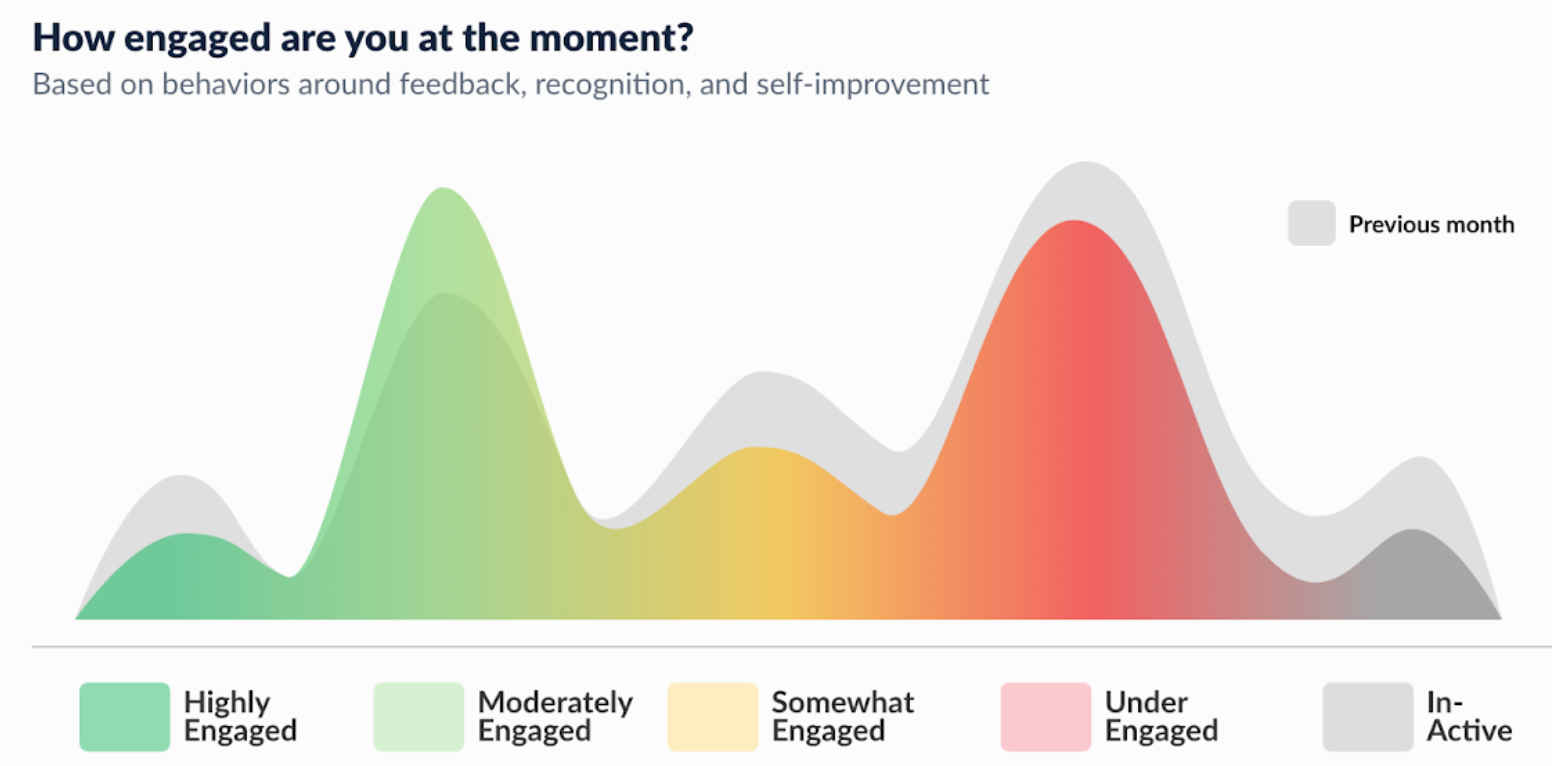
The preliminary results suggest that a manager’s activity does not have a significant effect on their team’s engagement.
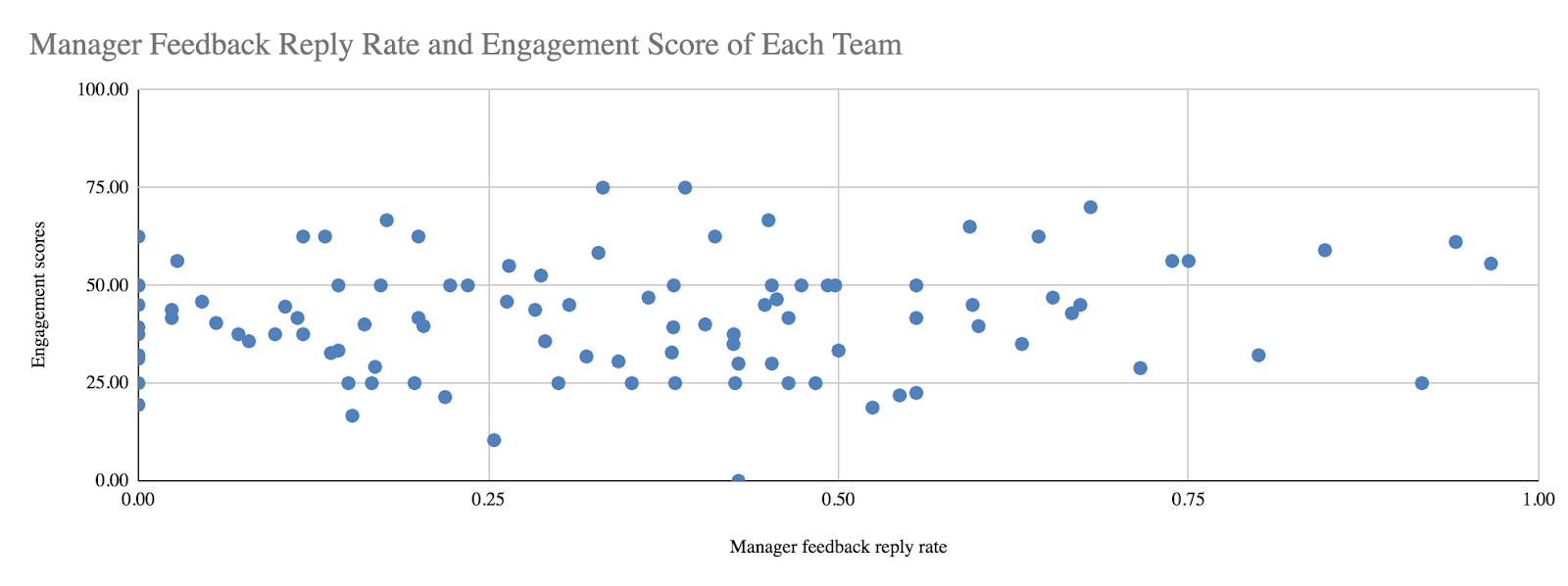
Since a manager’s effort to reply to team feedback would vary depending on the size of their team, we consider team size by classifying teams into three categories:
- Small-size team — less than or equal to 4 team members
- Medium-size team — between 5 to 8 team members
- Large-size team — more than or equal to 9 team members
The same results considering team size are displayed in the bubble chart below.

Each bubble represents a team, a small-size team in red, a medium-size team in green, and a large-size team in blue.
Managers of large-size teams are more likely to reply to their team members’ feedback than medium-size and small-size teams for teams with manager reply rates of more than 50%. When looking at teams with engagement scores greater than the median, almost half (24 out of 50 teams) are small-size teams. To clearly see the relationship between manager activeness, engagement score, and team size, the box and whisker plots highlight the median, range, and distribution of manager reply rates.
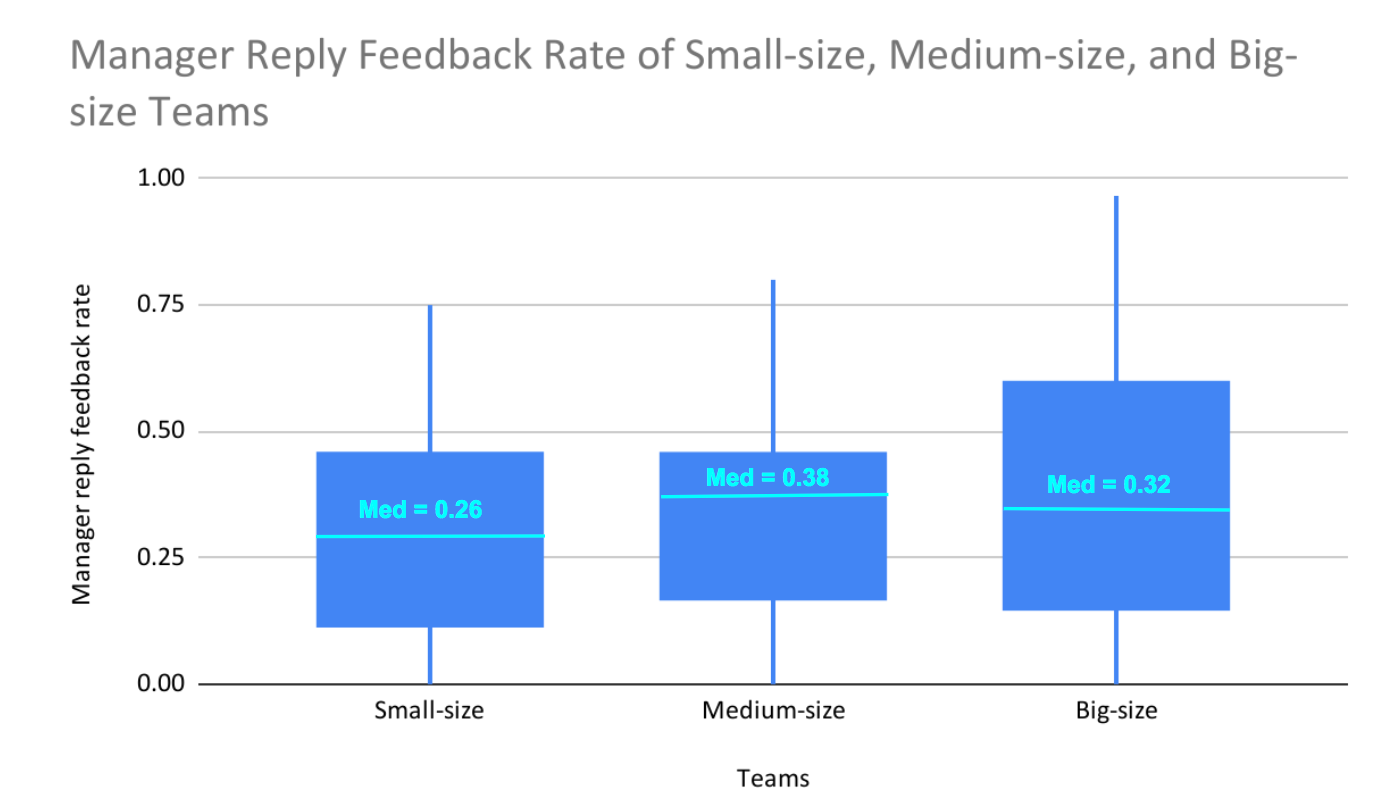
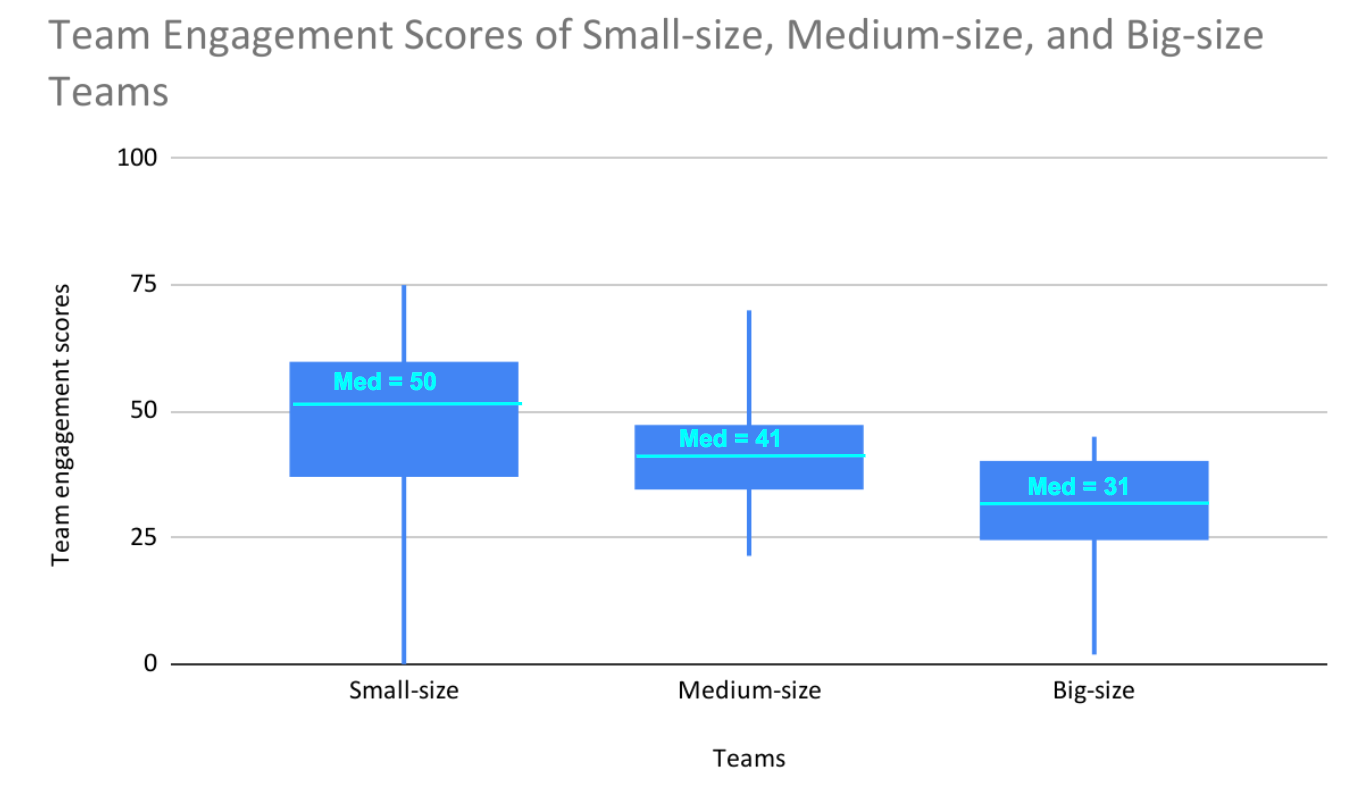
The median manager reply rates for each team size do not differ much. However, manager reply rates of large-size teams have a higher dispersion (high interquartile range or height of the box), implying a significant gap in managers’ activity for large-size teams.
Subsequently, team engagement scores by team size are considered. The median team engagement score of the large-size teams is lowest compared to medium-size and small-size teams.
A summary of our findings:
- Team size impacts team engagement scores.
- More than half (58%) of all small-size teams, 26% of all medium-size teams, and 17% of large-size teams have team engagement scores of more than 50.
- On large-size teams with active managers who reply to more than 50% of their team members’ feedback, every team has an engagement score of higher than 21.88. For most large-size teams with very active managers who reply to more than 75% of feedback, their team engagement scores are significantly higher (median team engagement score is 55.56).
Even though managers of small-size teams tend to be the least active (lowest feedback reply rate), the median team engagement scores are highest compared to medium-size and large-size teams. We infer that managers of small-size teams can personally interact with their team members more than those of large-size teams, which makes sense. In large-size teams, it’s more difficult to have timely one-on-one or face-to-face interactions with all team members. To create more interactions with team members, managers of large-size teams benefit from a feedback and engagement tool. Our results show large-size teams with very active managers are more likely to have high team engagement scores.
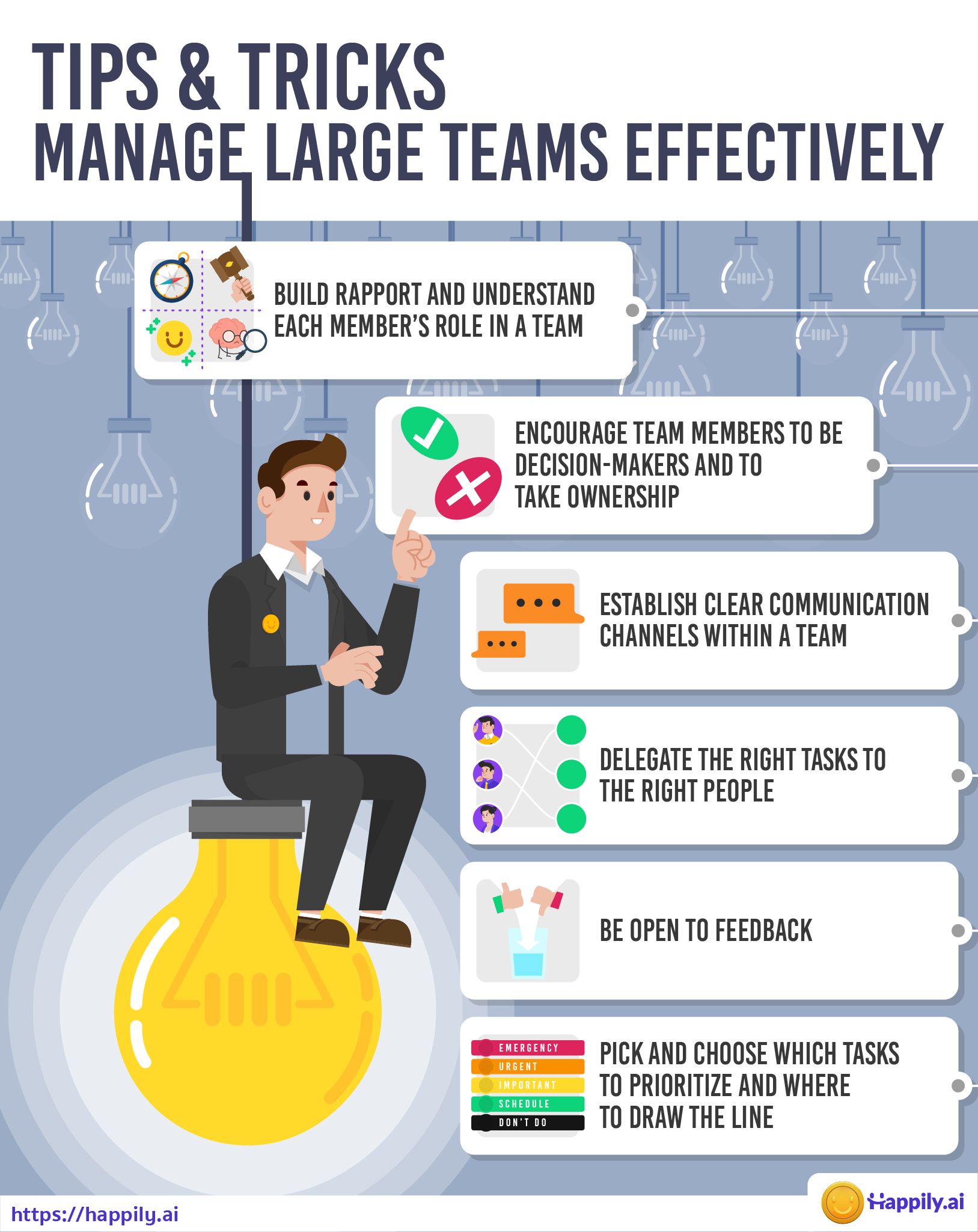
How to manage large teams effectively
Managing large teams is a challenge, especially for new managers. It is difficult to arrive at one way to manage big teams. In this case, managers should know how to be in charge of a large group of people by facilitating them to produce positive outcomes. The followings are tips & tricks to manage large teams effectively:
- Build rapport and show that you understand each member’s role in a team.
- Encourage team members to be decision-makers and to take ownership of projects.
- Establish clear communication channels within your team.
- Delegate the right tasks to the right people.
- Be open to feedback and encourage team members to be honest with their opinions.
- Pick and choose which tasks to prioritize and where to draw the line.
Conclusion
As organizations begin using teams to improve productivity and efficiency, managing employees becomes more difficult and more dependent on managers. In hybrid or remote work, employees’ work demands increase while they become less engaged. To improve team engagement, leaders and managers can benefit from using the right tools to communicate and engage with their teams, providing guidance, alignment, and support.
Managing teams, especially large teams, is tough. We found that engagement levels of large teams were abnormally low compared to small and medium-size teams. Because leaders of big teams have fewer opportunities for personal interactions with their team members, a feedback and engagement tool can help them manage their teams more effectively. Results show that large teams’ engagement levels are higher when managers are active. We invite you to check out and learn more about how we can help you engage your teams with Happily.
Happily is a one-of-a-kind platform that drives unprecedented feedback, recognition, insights, coaching, and more. Visit our website to learn more, request a demo, and be on your way to receiving real-time insights about your people's health, happiness and well-being - to help you better understand your teams better.
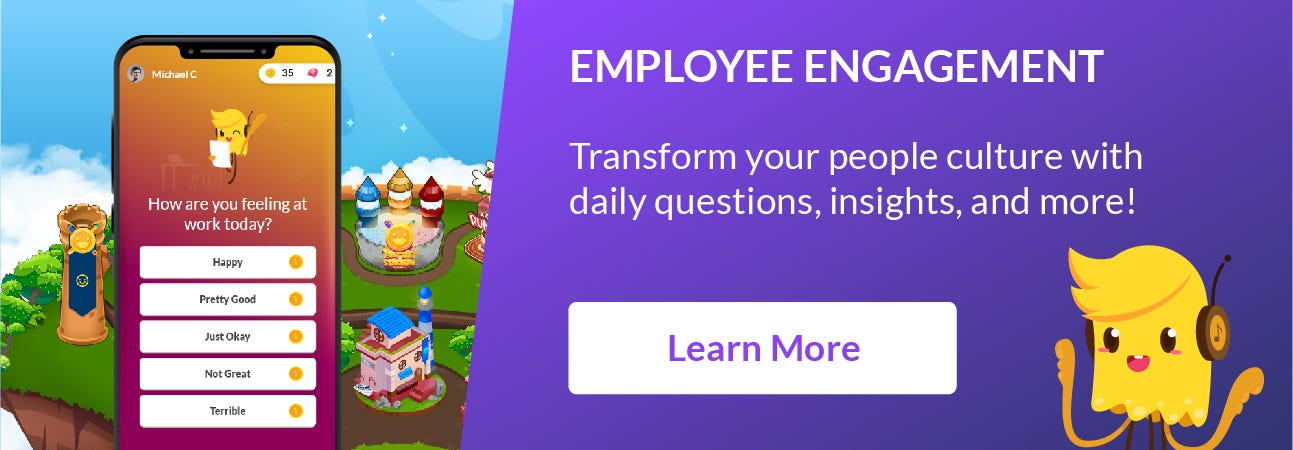
References:
[1]https://theconversation.com/the-future-of-work-is-hybrid-heres-an-experts-recommendations-167432
[2]https://blog.happily.ai/unlock-your-enps-and-employee-engagement-by-cultivating-active-people-managers/
[3] https://www.indeed.com/career-advice/career-development/teamwork-success
[4] https://www.gallup.com/workplace/286997/ideal-team-size-depends-manager.aspx










